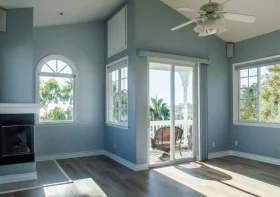How Homeowners Associations Make Communities Thrive

Homeowners Associations (HOAs) are the backbone of countless residential neighborhoods, quietly influencing the very atmosphere and functionality of the communities they serve. These organizations take on the responsibility of upholding neighborhood standards, managing daily upkeep, and orchestrating initiatives that prioritize residents’ quality of life. Duties often include the oversight and maintenance of communal amenities, enforcement of rules, and organization of engaging social events that help neighbors form lasting connections.
For both current homeowners and those seeking a new place to live, a well-managed HOA spells the difference between a lackluster neighborhood experience and a vibrant, orderly, and harmonious environment. Trusted HOA management provides essential expertise, streamlining HOA operations and ensuring residents experience superior service and peace of mind.
As stewards of community well-being, HOAs are charged with a broad mission—preserving property values, fostering community spirit, achieving operational transparency, and embracing innovations. By partnering with dedicated management professionals, an HOA can implement best practices, guarantee transparency, and build neighborhoods that stand out for their organization and livability. Ultimately, proactive, resident-focused associations set the stage for long-term neighborhood success and homeowner investment.
Contents
Preserving Property Values
One of the most fundamental and visible impacts of HOAs is their unwavering commitment to upholding and even boosting property values for all residents. This begins with establishing and enforcing architectural and landscaping guidelines that govern both private properties and shared spaces.
By maintaining uniformly attractive exteriors, manicured lawns, well-kept amenities, and prompt repairs to communal assets, HOAs ensure the neighborhood always puts its best foot forward. This attention to detail not only enhances curb appeal but also signals to prospective buyers that the community is well cared for, ranking it high on desirability lists.
Economic studies consistently highlight the value that HOAs add to residential properties. On average, homes within HOA-managed neighborhoods fetch a 4% price premium when compared to similar properties outside these communities. This premium is the direct result of the ongoing efforts HOAs invest in their neighborhoods—year-round maintenance, organized improvement projects, and respectful enforcement of standards all create a ripple effect, cementing a positive neighborhood reputation.
These measures not only attract buyers seeking peace of mind but also provide current residents with the satisfaction and security that comes with knowing their investment is being diligently protected
Enhancing Community Engagement
While property maintenance is a cornerstone of HOA responsibilities, equally important is the fostering of community engagement and a strong neighborhood identity. Effective HOAs recognize the deep value of bringing residents together and actively organize social, recreational, and educational events that build connections. These may include seasonal block parties, festive holiday celebrations, group yard sales, and informative workshops on home and garden care.
Beyond simply providing entertainment, these events encourage meaningful participation and cultivate a sense of belonging. When residents feel engaged and invested in where they live, they’re not only more likely to volunteer for committees and improvement projects, but also to respect the community’s rules and look out for one another.
This collective sense of ownership fosters an inclusive, secure, and harmonious neighborhood climate, leading to long-term residency, increased satisfaction, and a culture in which everyone has a voice and a role in shaping the future of their community.
Effective Communication Strategies
At the heart of every successful HOA is clear, effective communication between leadership and residents. Essential information—ranging from policy updates and event details to maintenance schedules and urgent alerts—must be delivered promptly and reliably.
Today’s most successful HOAs employ a multichannel approach, using digital newsletters, email blasts, SMS notifications, and secure online portals to make sure every resident has access to timely information wherever they are.
This transparent strategy not only keeps everyone informed but also empowers residents to quickly and easily reach out with questions or concerns, facilitating a two-way dialogue. Issues can be reported, tracked, and resolved more efficiently than ever. Furthermore, well-designed communication protocols build trust and signal to residents that the HOA board is accountable and responsive to community needs.
Transparent Financial Management
Financial stewardship is the bedrock upon which HOA credibility is built. Transparency in financial operations—through regular budget updates, accessible statements, and open meetings—is crucial for maintaining resident trust and preventing misunderstandings. When residents can see exactly how their dues are allocated and how reserve funds are managed, confidence in the HOA’s decision-making grows, and disputes are minimized.
Transparent financial management goes a step further by actively involving residents in major financial decisions, inviting feedback on spending priorities, and accommodating community-driven enhancements.
This inclusive approach leads to smarter resource allocation, whether it’s upgrading amenities, preserving shared infrastructure, or investing for the future. By fostering an environment of accountability and participation, HOAs can ensure that financial processes are not only effective but also fair and collaborative.
Embracing Technology
Technological advancements have become vital assets in the modern management of HOA communities. By adopting user-friendly online payment solutions, digital record-keeping systems, and virtual conferencing tools, HOAs markedly reduce administrative burdens and enhance convenience for both residents and board members. Community websites and mobile apps now allow homeowners to pay dues, submit requests, RSVP to events, and participate in important votes—all from the comfort of their own homes or on the go.
These tools also provide real-time news updates and foster virtual spaces for discussion and collaboration, further breaking down barriers to engagement. Beyond daily conveniences, technology is revolutionizing how HOAs track maintenance expenses, monitor trends, and forecast future needs using sophisticated analytics tools. By staying on the leading edge of technological innovation, communities position themselves as forward-thinking and ready to adapt to the evolving expectations of today’s homeowners.
Sustainable Practices
Environmental sustainability is emerging as a key differentiator for communities managed by proactive HOAs. Many associations are championing eco-friendly initiatives, such as replacing incandescent lighting with LED fixtures, incorporating native plants that require less water and maintenance, installing smart irrigation systems, and running comprehensive recycling programs. These choices not only lessen the community’s environmental footprint but also ensure that landscape maintenance and utility costs are more manageable over the long term.
Green initiatives are strongly aligned with the values of an increasing number of homeowners, who seek living spaces that reflect a commitment to environmental responsibility. Residents benefit from cleaner air, lower energy bills, and inspiring green spaces, all of which enhance well-being and contribute to stronger retention. Moreover, sustainable practices make communities more attractive to environmentally conscious buyers, boosting marketability and future-proofing neighborhood value.
Conclusion
Homeowners Associations are at the heart of stable, desirable, and well-maintained neighborhoods across the country. Through careful management of property values, active community engagement, transparent financial oversight, innovative use of technology, and the adoption of sustainable methods, HOAs foster environments where residents thrive and prosper.
With the expert guidance of partners, these communities are equipped to reach new heights of organization and livability. As the needs of homeowners evolve, HOAs that embrace best practices and proactive leadership will continue to provide the foundation for vibrant, future-ready neighborhoods.



